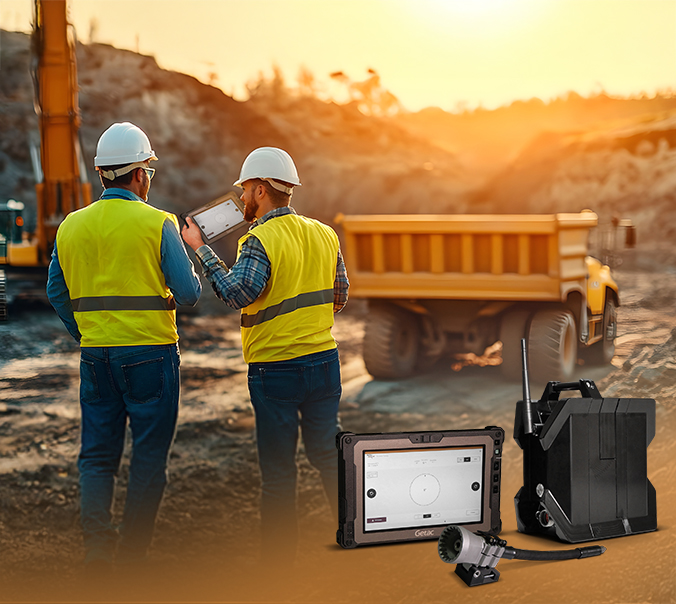News
Cultural Shift: Enabling Technicians to Embrace Change
October 2, 2025
Blogs
Building trust, training and buy-in for safer maintenance.
Change in mining maintenance rarely happens overnight. New systems, tools, and safety protocols often meet resistance not because technicians doubt their value but because day-to-day work already demands so much from them. Adding something new can feel like an extra burden. This is why the shift toward Elimination of Live Work (ELW) requires a cultural change that brings people along with it by emphasising value.
HydraTune recognises that the success of ELW adoption depends as much on trust and behaviour as it does on the engineering of the tools that enable it. Safer tools can only deliver their full impact when technicians understand them, believe in them, and choose to use them every day. This blog explores how to create that cultural shift, and how HydraTune solutions make it easier for crews to embrace safer ways of working.
Why Behavioural Change Matters
Technicians often carry decades of experience, shaped by doing things their way in tough environments. Many have developed personal systems for handling hazards, taking pride in their ability to “get the job done” under pressure. Asking them to leave spanners behind and move to tablets, sensors, and remote adjustments is not a small request.
Resistance usually comes down to two concerns: reliability and efficiency. Crews want to know that the new process will work just as well, if not better, than the old one. They also want reassurance that the extra steps will not slow them down. These concerns are valid and addressing them transparently is the key to building acceptance.

Building Trust Through Training and Demonstration
Trust begins with experience. When technicians see SafeAdjust and FlexAdjust in action, the change feels less like theory and more like a practical upgrade to their routine. Demonstrations on site show that wireless tuning is not just safe but precise, reaching accuracy down to 1°. Once they see adjustments made quickly and consistently without stepping into hazardous zones, hesitation starts to fade.
Training plays an equally important role. Instead of long sessions filled with theory, crews benefit most from hands-on learning with their own equipment. Walking through a real job using the SafeAdjust, HydraTune tablet and the app allows them to connect what they already know about hydraulics with the new tools designed to protect them and improve their workflow. This approach builds confidence, showing that adopting ELW does not mean throwing away experience, it means enhancing it.
Respecting the Technician’s Role
Cultural change works best when it respects the people on the ground. ELW is not about telling crews they have been working the wrong way. It is about recognising the risks they have always faced and providing tools that protect their skills and judgement. SafeAdjust and FlexAdjust were designed with this respect in mind. The technology doesn’t aim to take control away from the operator, but instead, it gives them a safer, smarter way to apply their expertise.
When technicians see that these tools were designed for the realities of their environment like dust, vibration, heat, and long shifts, the sense of being listened to makes adoption easier. It shows that tools like SafeAdjust place the health and wellbeing of the operator at the forefront by removing unnecessary strain and risk.
Encouraging Buy-In Through Real Benefits
People embrace change when it benefits them directly. For technicians, that means fewer hours contorted in unsafe positions, less frustration dismantling machines, and reduced stress working near live pressure systems. For safety managers, it means fewer exposure hours, stronger compliance with ELW standards, and clearer data for risk reporting. For site leadership, it means less downtime, more reliable machines, and a workforce that feels valued and protected.
Sharing these benefits clearly, with examples drawn from real maintenance jobs , makes the case stronger. Crews are more likely to buy in when they understand that the tools respect their time, protect their health, and improve their work.
Leading Cultural Change Across the Site
Leadership plays a crucial role in embedding ELW as a standard. When managers demonstrate support for HydraTune solutions (by investing in training, encouraging open feedback, and recognising early adopters), crews take notice. When that happens, the message becomes clear: this is not a passing initiative but a lasting shift in how the site works.
Peer influence also matters. Technicians who adopt SafeAdjust and FlexAdjust quickly become advocates, showing their teams how the tools make difficult jobs easier and safer. Over time, what once felt like change becomes the new normal.
HydraTune as a Partner in the Transition
Cultural change cannot be handed down, it must be built into daily work. HydraTune’s approach to supporting ELW adoption acknowledges this reality. Our solutions, SafeAdjust, the HydraTune tablet and app, and FlexAdjust, are designed for performance, usability, universality, and integration into existing maintenance practices.
The transition toward ELW is about creating a safer, more professional environment where technicians can focus on their craft without unnecessary risk. That cultural shift, once established, strengthens both the people and the operation.
Embracing the Change Together
Adopting ELW is a technical upgrade and a human journey. It means giving technicians the right tools, the right training, and the confidence that safety does not come at the cost of performance.
HydraTune’s role is to make that transition practical. SafeAdjust and FlexAdjust give crews the ability to tune hydraulics safely and precisely. Training and support ensure teams feel confident using the tools, so the shift becomes part of the normal routine rather than a disruptive add-on.
When people trust the process and see the results, the cultural change needed for ELW takes hold naturally. Get in touch with HydraTune today to learn how you can incorporate ELW principles into your operations.
